Suunto Race review: small price, big battery, but not without compromise
A solid offering from Suunto, but the Race lacks the technical chops of rivals
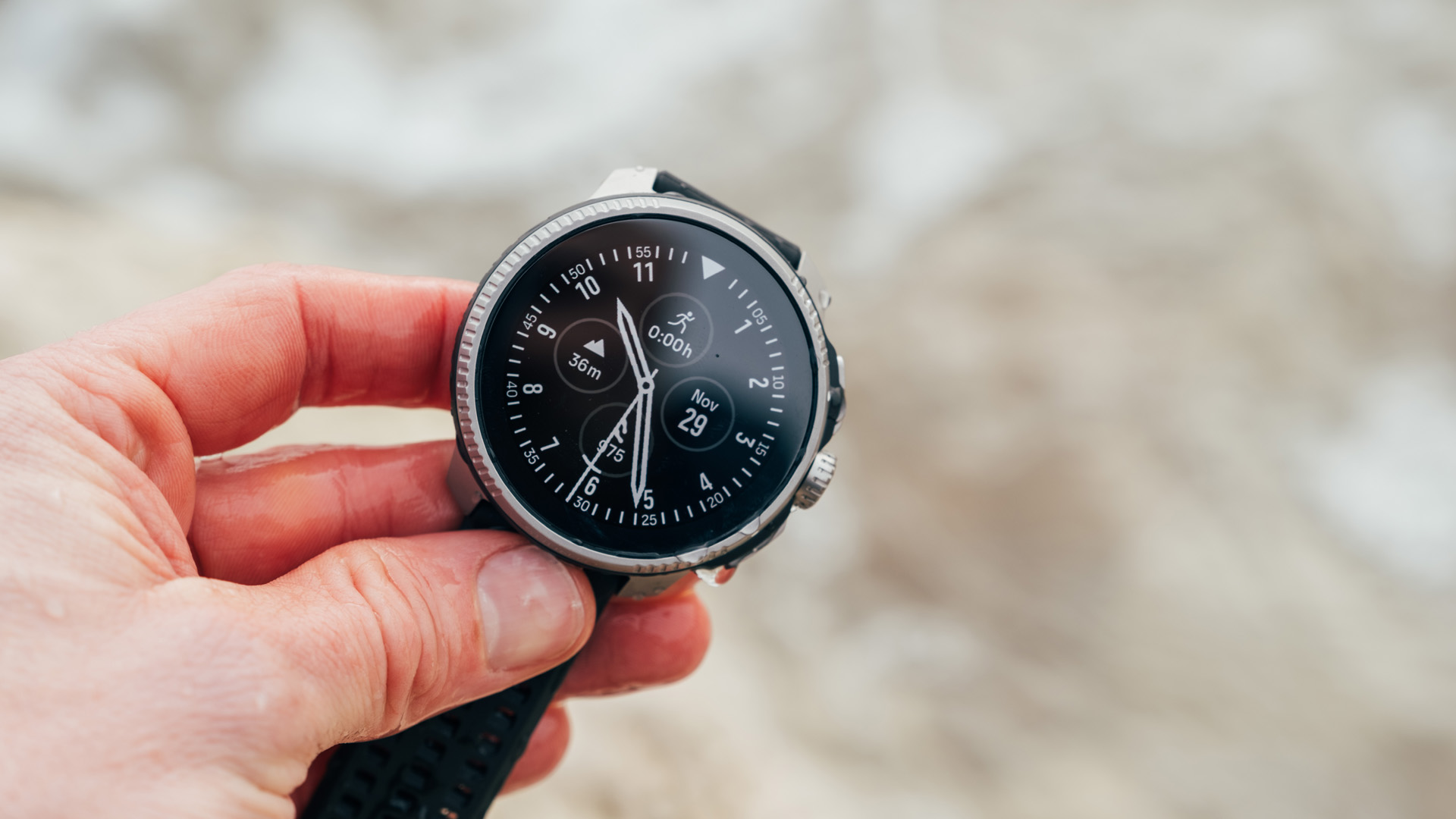
The Suunto Race is an excellent effort from the Finnish brand, offering a genuine rival to select models from Garmin, Polar, Fitbit and Apple, but it is far from perfect. It performs well if you want a large, bright display and an awesome battery life. But for accurate activity tracking, genuinely granular performance insights and a faultless operating system, it’s worth test-driving Garmin’s Forerunner 965 or the Polar Vantage V3 if the budget stretches.
-
+
Amazing value-for-money performance wearable
-
+
Bright AMOLED touchscreen
-
+
Long battery life
-
-
Build quality isn't amazing
-
-
More support in the Suunto app would be brill
-
-
Heart rate sensing accuracy isn't great
-
-
Dull watch UI
Why you can trust T3

Although the Finnish firm might be better known for its hard-working dive watches and infallible navigational instruments, it was also an early runner in the active smartwatch game. But as we all know, the running, outdoors and general fitness smartwatch market is now saturated with a slew of excellent contenders.
Garmin is still bossing things with its Forerunner, Fenix and Epix range, while new offerings from Polar and Coros are rapidly heating up the competition. Heck, even more traditional smartwatches, like the Apple Watch Series 9 and the Google Pixel Watch 2, now make for formidable running, hiking and general wellbeing wearables.
Suunto has been looking to turn things around, starting with its Suunto Vertical outdoors watch, which is particularly attractive in the Mammut collaboration guise, and now this… the Suunto Race running watch.
The running watch packs an ultra-bright AMOLED touchscreen, as well as an enlarged digital crown, which isn’t too dissimilar from the one you might find on an Apple Watch Ultra. There’s also a massive battery life, solid GPS tracking and built-in sensors for heart rate, sleep and activity tracking.
Above all else, it undercuts its key rivals in its pricing strategy, as you’ll see below. But is this a veritable bargain, or does scrimping on the budget show? Let’s find out…
Suunto Race review
Suunto Race review: price and availbility
The Suunto Race comes in two distinct flavours: there’s the cheapest Stainless Steel version at £398/$449/AUS$720 or a more expensive Titanium model, like the one we tested, which comes in at £479/$549/AUS$879.
The hardware is near-identical underneath, but the Titanium model elevates the overall build quality thanks to its contrasting Charcoal finish. The bezel on the Stainless Steel model is all black, which is easily mistaken for plastic. Both models can be purchased directly from Suunto or via various running gear specialists.
When stacked up against rivals, Suunto has priced this watch very keenly, as it undercuts the Garmin Forerunner 965 by more than £100/$100, while the aforementioned Polar Vantage V3 is around £50/$50 pricier.
Suunto Race review: specification
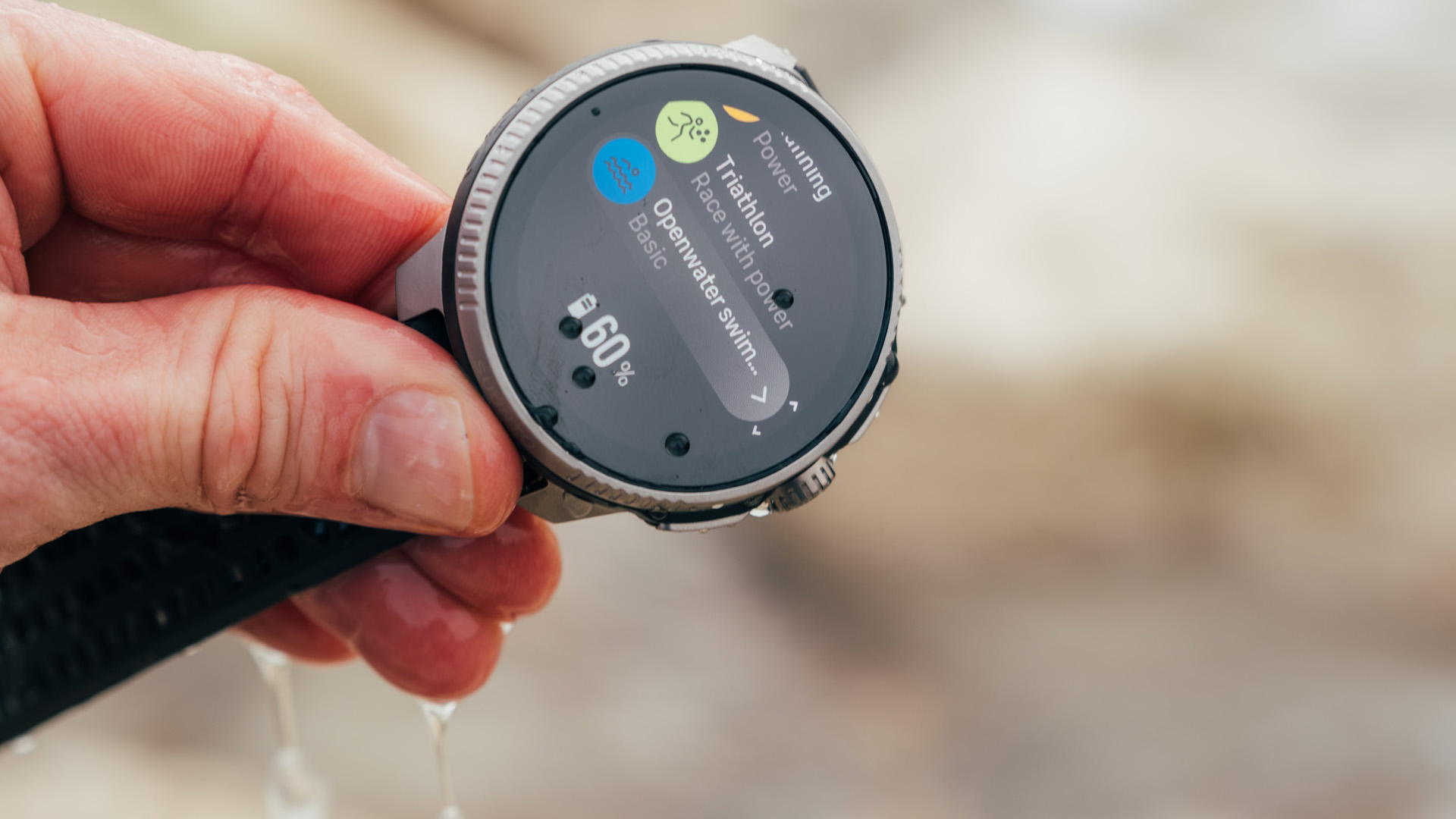
- Measurements: 49 x 49 x 13.3 mm / 1.93 x 1.93 x 0.52 "
- Weight: 69 g / 2.43 oz
- Bezel material: Titanium Grade 5
- Case material: Glass fibre-reinforced polyamide
- Display resolution: 466 x 466
- Battery life: 40 hours to 26 days
- Connectivity: Bluetooth
- Sensors: Optical heart rate, GPS, altimeter, barometer
- Storage: 32GB (Titanium model, 16GB in Steel version)
- Water resistance: Up to 100m
Suunto Race review: design and build quality
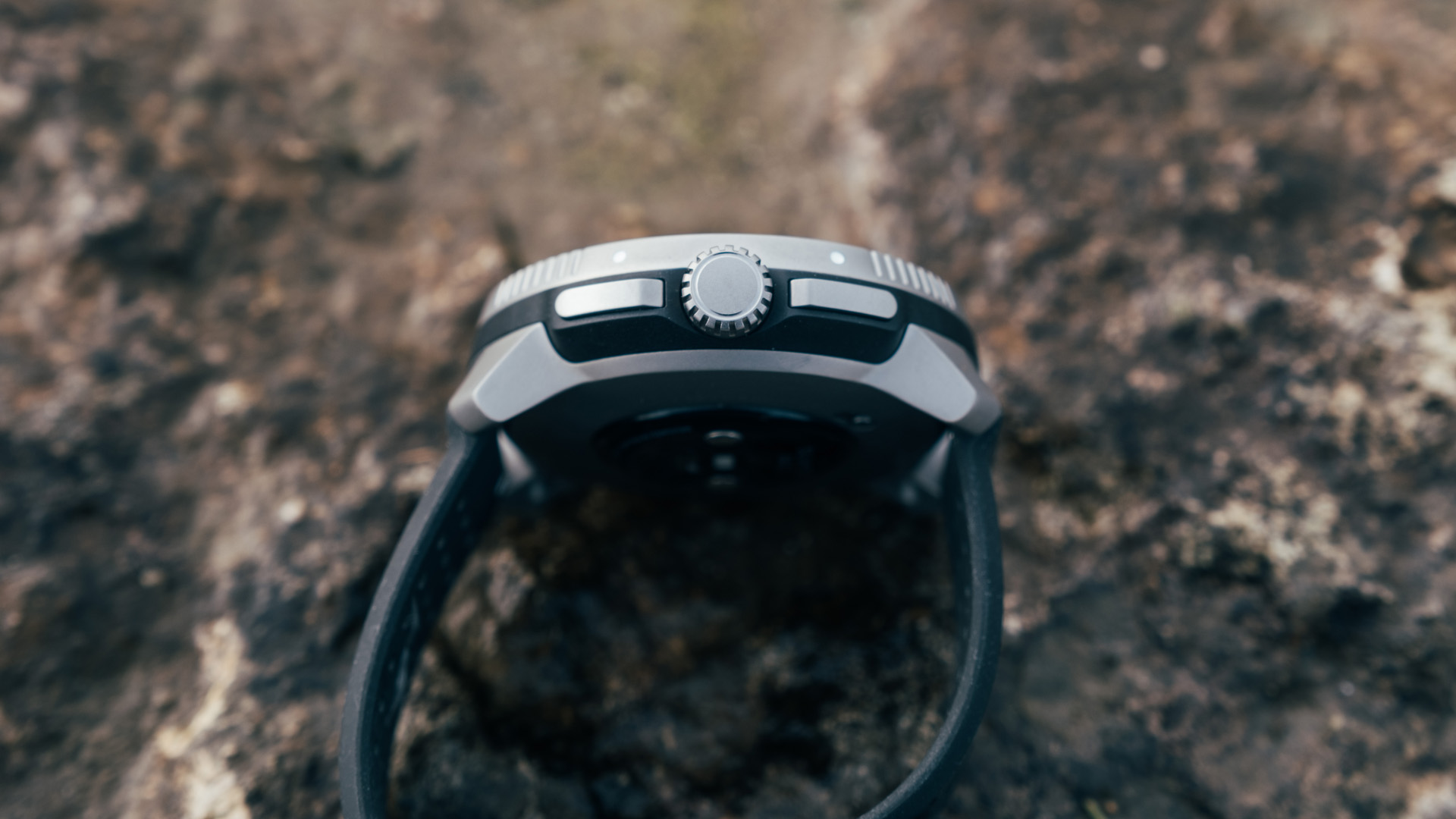
First things first, this isn’t the watch to plump for if you like things small, compact and not too obvious, especially on smaller wrists. At 49mm, the bezel is a bit of a beast, and it sits quite proud, thanks to the chunky casing and digital crown Suunto has fitted.
It does mean you get a decent amount of screen real estate, with a 1.43-inch touchscreen available and 466 x 466 resolution to play with - all pumping out 1,000 nits of brightness. However, the screen doesn't stretch to the very outer edges of the bezel if you’re getting really picky.
Suunto packages the Race nicely with a showy cardboard box making this feel like a much more premium proposition than the price tag would originally suggest.
Delve inside, and you’ll find the included perforated silicone strap and complete metal toggle to keep the excess strap in place while charging is taken care of by a proprietary magnetic charger with an old-school USB connector that feels very flimsy and is quite easily knocked from its position. Beefier magnets would have been nice.
Overall, the build quality feels solid, like it can withstand a few bumps and scrapes along the way. But the 13mm thickness means it lacks a little subtlety and doesn’t quite give off the same premium appeal as something like Garmin’s Fenix 7 or Epix models - although they are a lot more expensive.
Similarly, I also had the Polar Vantage V3 on test at the same time, and that felt slightly less intrusive on the wrist. The Suunto is a big watch, but then many will see that as a positive.
In terms of button layout, it’s fairly standard stuff, with two buttons on the right flanking a digital crown, which can be depressed to make a selection. The digital crown is large and can get in the way, which I’ll touch on later, but it’s a nice way of quickly scanning through various menu options.
Suunto Race review: features
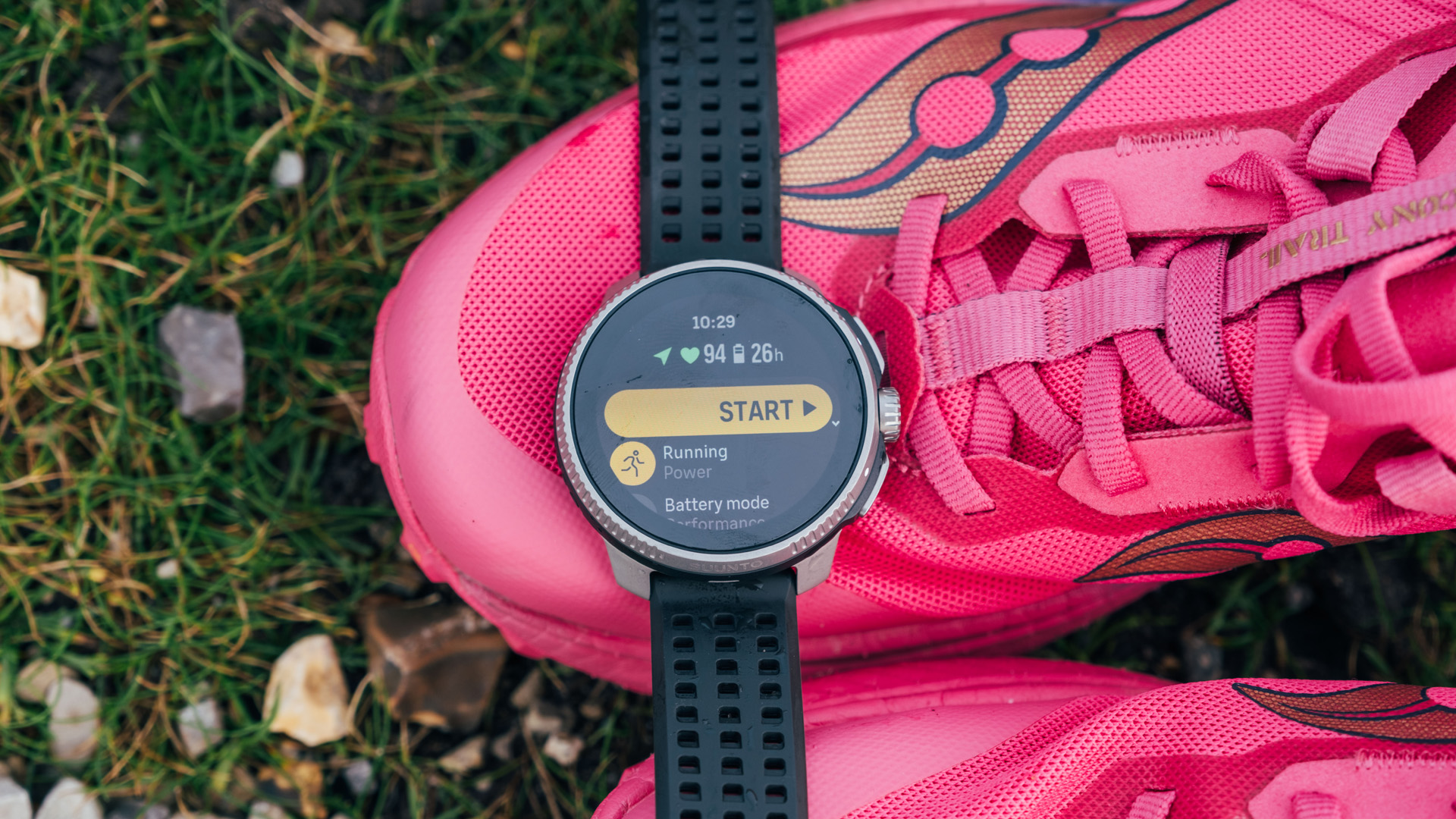
It might have “race” in the title, but Suunto’s all-singing, all-dancing smartwatch is more of an overall fitness, wellness and outdoors navigational device than it is something you merely glance at during your fastest efforts.
As with most modern Garmin’s (and plenty of other rivals), there are lots of pre-populated sports and workout programmes to choose from, with the menu spanning everything from classic strength training to kayaking and beyond.
Again, as with rivals, the activity you choose influences the way the workout screens are laid out and the sort of information you receive. On a run, it’s things like distance travelled, split times, heart rate zones and any other configuration you care to set up.
Using any of the above in any given week will then have a knock-on effect on the amount of “Resource” you have left for further training sessions or activities. It’s almost identical to Garmin’s Body Battery and Training Readiness insights in so much as it takes things like Heart Rate Variability (HRV) and sleep scores into account when determining how well-recovered you are.
There’s even a quasi-Morning Report that tells you how good the previous night’s sleep was, how much energy you’ll have for a workout and even suggestions on what those workouts should be.
Head over to the accompanying app, and you’ll be treated to further insights from the Suunto Coach, which will comment on your progress and suggest areas that might need improving.

However, it is clear this is most definitely a running/cycling/swimming watch, as it prioritises those sorts of activities in its suggestions. Apparently, if you like traditional strength training and bouts of HIIT, it’s very easy to prompt Suunto Coach into moaning at you for not performing enough “cardio”, which is just plain wrong.
Finally, it’s worth dedicating a bit of time to more traditional smartwatch features, which are typically limited to watches offered by health and fitness brands. The bottom line is to opt for an Apple or Google watch if you want genuinely usable smart functionality.
That said, Garmin still offers things like the ability to pay for groceries from the wrist and enough internal memory to store Spotify playlists. There’s none of that in the Suunto, but this is largely reflected in the cheaper entry price.
When paired with my iPhone, all I managed to benefit from was a notification on the watch every time my phone rang. There is a little more for Android users, with the ability to preview message notifications and control music playback while working out, but it’s nothing to write home about.
Suunto Race review: performance
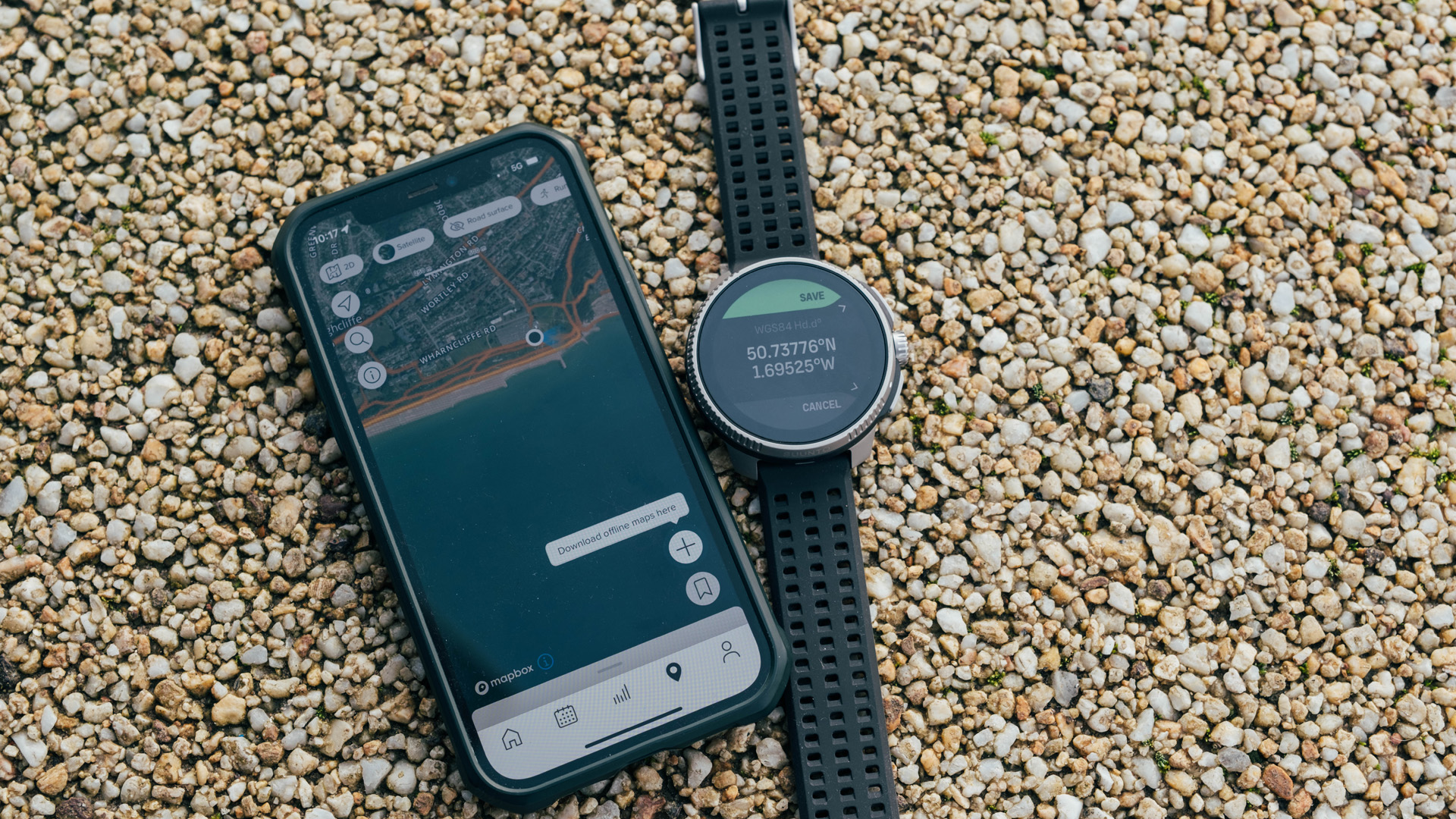
The first thing to note about Suunto’s operating system is that it is prone to some lagging, while it is easily muddled if you try to do too much too quickly. This is especially true when one of the workout profiles is activated, and the watch is otherwise engaged with reading heart rate, tracking GPS and more. It just gets a bit confused.
The other major bugbear I had from early on was the digital crown, which is just too big and gets easily knocked or depressed during a workout. Apple has negated this in its Ultra by shrouding its digital crown with the metal casing and Action Button, which means it remains flush with the device and is a bit harder to accidentally press - plus, you can lock it out by activating the Water Lock.
In addition to this, I had a bit of trouble with the heart rate readings in the first few days with the watch. The real-time readings often spiked for no reason, and they weren’t accurate. As a test, I fired up my Garmin Fenix 7 and Apple Watch Ultra 2, wearing multiple watches on each wrist like a fool, and found the Suunto was a lot slower to give me accurate heart rate readings.
For further parity, I also hooked up an external heart rate monitor, which thankfully proved simple enough, and this immediately improved things. Strangely, the wrist-based readings settled down after a few days and a few power on/power off cycles, but I’d still say they weren’t as accurate as some of its key rivals.
That said, Suunto allows you to pair a number of external devices via Bluetooth if you are hell-bent on getting the most accurate data possible, and I feel some will do this. Cyclists will want to add power meters and data from indoor trainers, while runners might feel the need to do the same, although there is a wrist-based power mode built-in.
For me, Suunto has always been an outdoors brand, and this shows in its accurate GPS tracking and the ability to download offline maps. It’s a bit of a chore, as large map areas take an absolute age to download and then upload to the device, but it is a necessity if you are venturing off-grid.
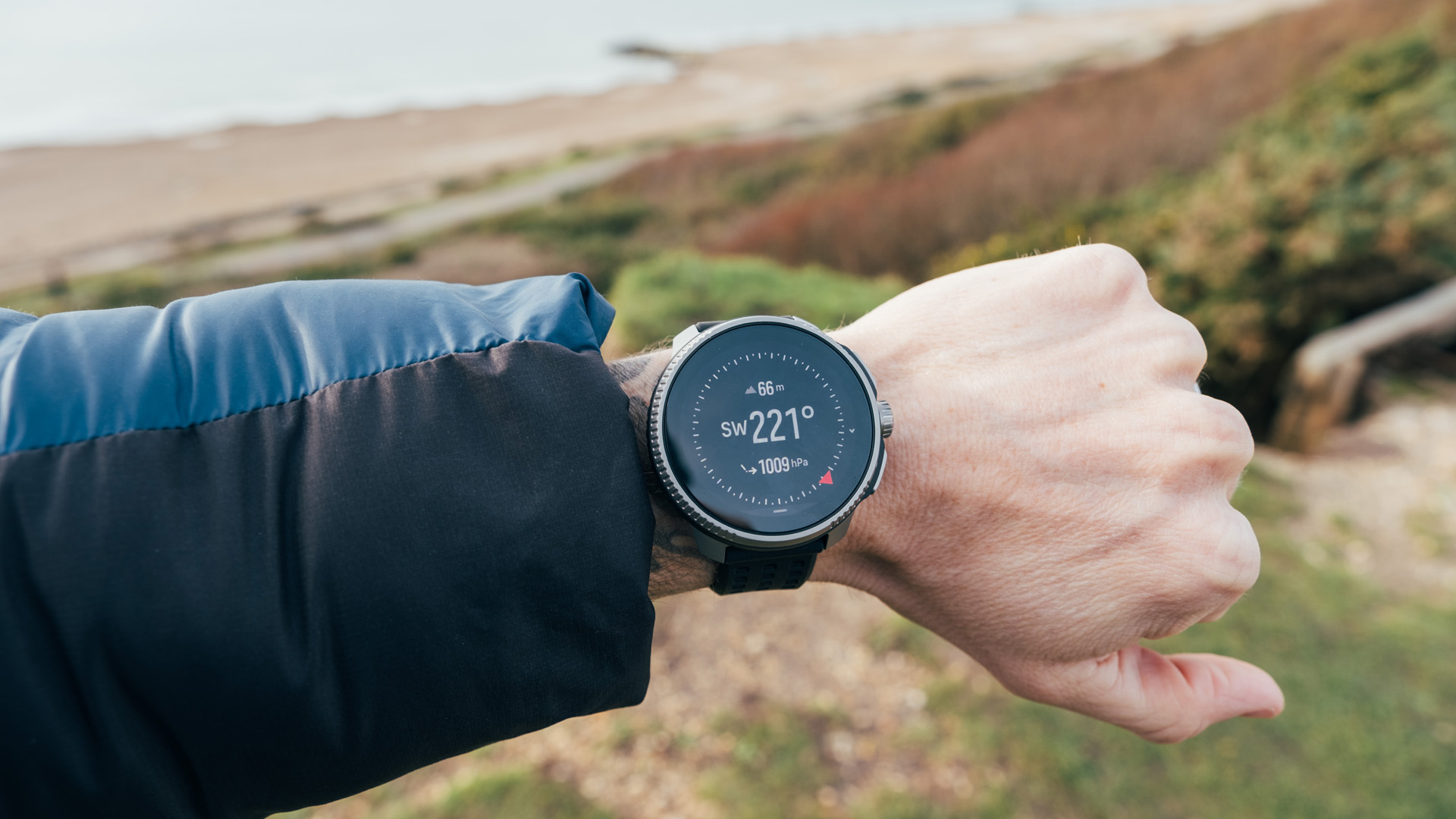
In fact, I’d argue this is one of the best devices, especially at this price, for things like trail running or gravel riding. The big, bright screen is easy to read, and the route navigation is beautifully clear. I preferred using it to various Garmins when it came to navigating some twisty forest trails, with the digital crown offering a great way to quickly zoom in and out of maps.
Even when using the watch as your navigational partner, it still offers a pretty sensational battery life. During normal use, with several workouts and runs thrown in, I managed to easily get a week from the battery, and that included using it as a nightly sleep tracker.
The fact that it will last up to 40 hours with GPS activated makes it a solid option for endurance athletes pushing their limits, while this figure can be stretched to 120 hours in Tour mode, where the watch sacrifices heart rate monitoring and tracks GPS location less frequently.
In all honesty, I didn’t head into the wilderness with just the Suunto as an aid, but I did have every conceivable bell and whistle activated when out on various runs and cycles. It feels like the battery probably wouldn’t last up to 40 hours, seeing as I noted the battery drain during these sessions, but it wasn’t anything to worry about. Worst case, 30 hours is likely very achievable and that’s plenty long enough to be away from a USB port.
Suunto Race review: verdict
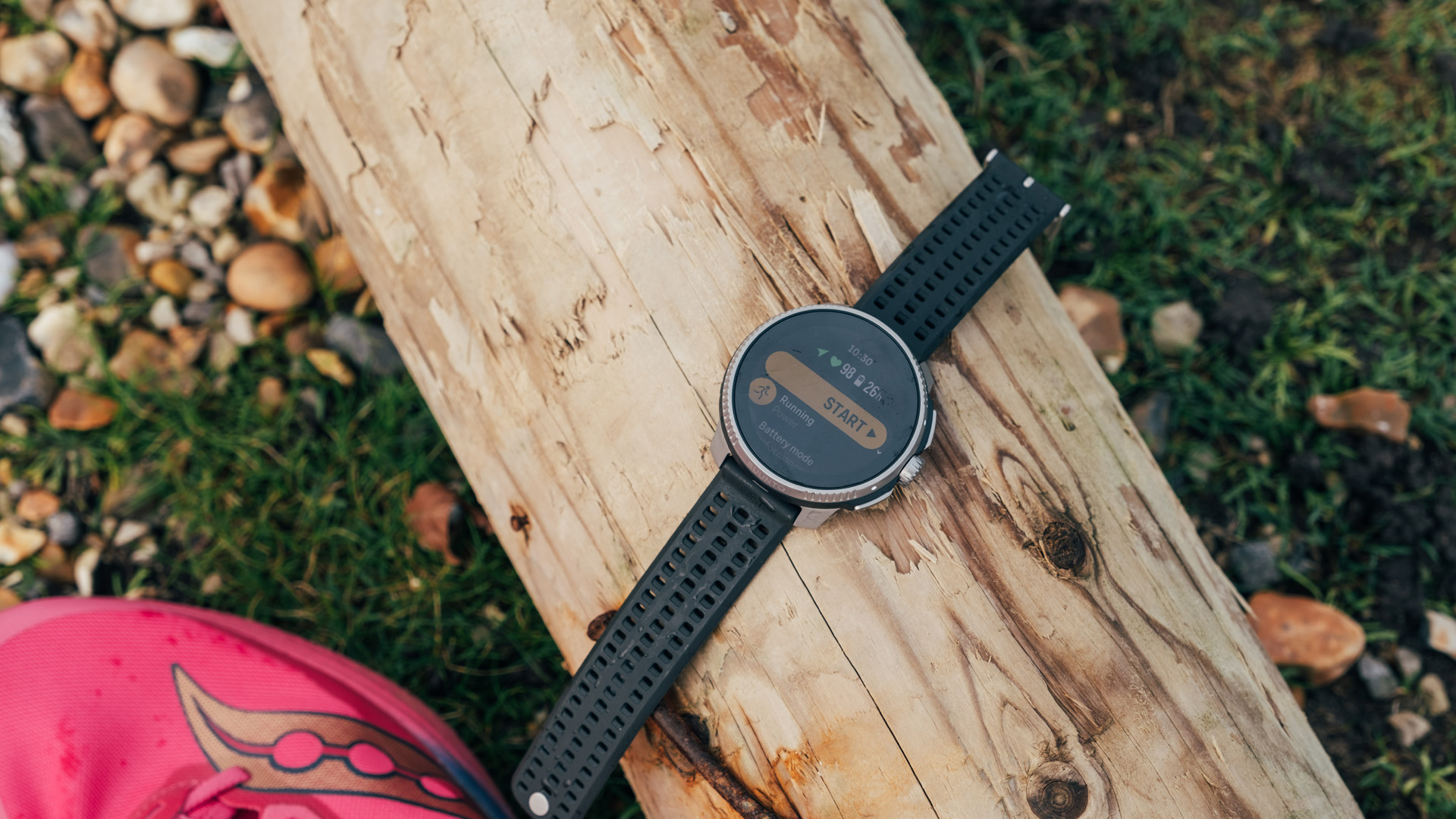
Considering the price, Suunto offers a solid all-round training, workout and navigation partner in the Race. The screen is clear and bright, while the mixture of touchscreen and physical controls makes it easy to use on a daily basis. What’s more, the battery life is excellent.
However, I feel like there is still plenty of room for improvement, and Suunto could go further by offering more training plans, improved wrist-based heart rate sensing and a sharper user interface, as the current set-up is prone to lagging.
Above this, it just looks and feels a bit cheap, with the scant selection of optional watch faces not doing too much to help matters. Granted, fitness smartwatches aren’t going to rival a Patek Phillipe in a beauty contest, but Apple and Google’s offerings at least try.
Looks and minor quibbles aside, it’s a solid effort from Suunto and definitely one of the best smartwatches I’ve tried from the brand in recent years. With a few software tweaks (and maybe a new heart rate sensor), it could be really fantastic… especially if the company manages to keep it at this very tempting price.
Suunto Race review: also consider
There are lots of watches out there to consider, particularly if we focus on this more expensive Titanium version of Suunto’s Race. The Garmin Forerunner 265 is actually a little cheaper, while the Venu 3 is also an excellent all-round fitness watch at a similar price.
The Coros Apex Pro is also a great option for solid GPS tracking, accurate heart rate sensing and battery life, although it sacrifices the AMOLED display.
If you can stretch the budget, the latest Garmin Forerunner 965 is excellent, while the Polar Vantage V3 offers some of the best biosensing tech we’ve tested.
Sign up to the T3 newsletter for smarter living straight to your inbox
Get all the latest news, reviews, deals and buying guides on gorgeous tech, home and active products from the T3 experts
Leon has been writing about automotive and consumer tech for longer than he cares to divulge. When he’s not testing the latest fitness wearable and action camera, he’s out in a shed fawning over his motorcycles or trying not to kill himself on a mountain bike/surfboard/other extreme thing. He's also a man who knows his tools, and he's provided much of T3's drills coverage over the years, all without injuring himself.
-
 Girard-Perregaux Laureato 38 mm gets a blue diamond upgrade
Girard-Perregaux Laureato 38 mm gets a blue diamond upgradeWe’re totally besotted by these diamond-bezelled beauties from Girard-Perregaux
By Alistair Charlton Published
-
 Gossamer Gear's Grit 28 is a masterclass in ultralight backpack design
Gossamer Gear's Grit 28 is a masterclass in ultralight backpack designTrail runners and fastpackers, take note
By Matt Kollat Published
-
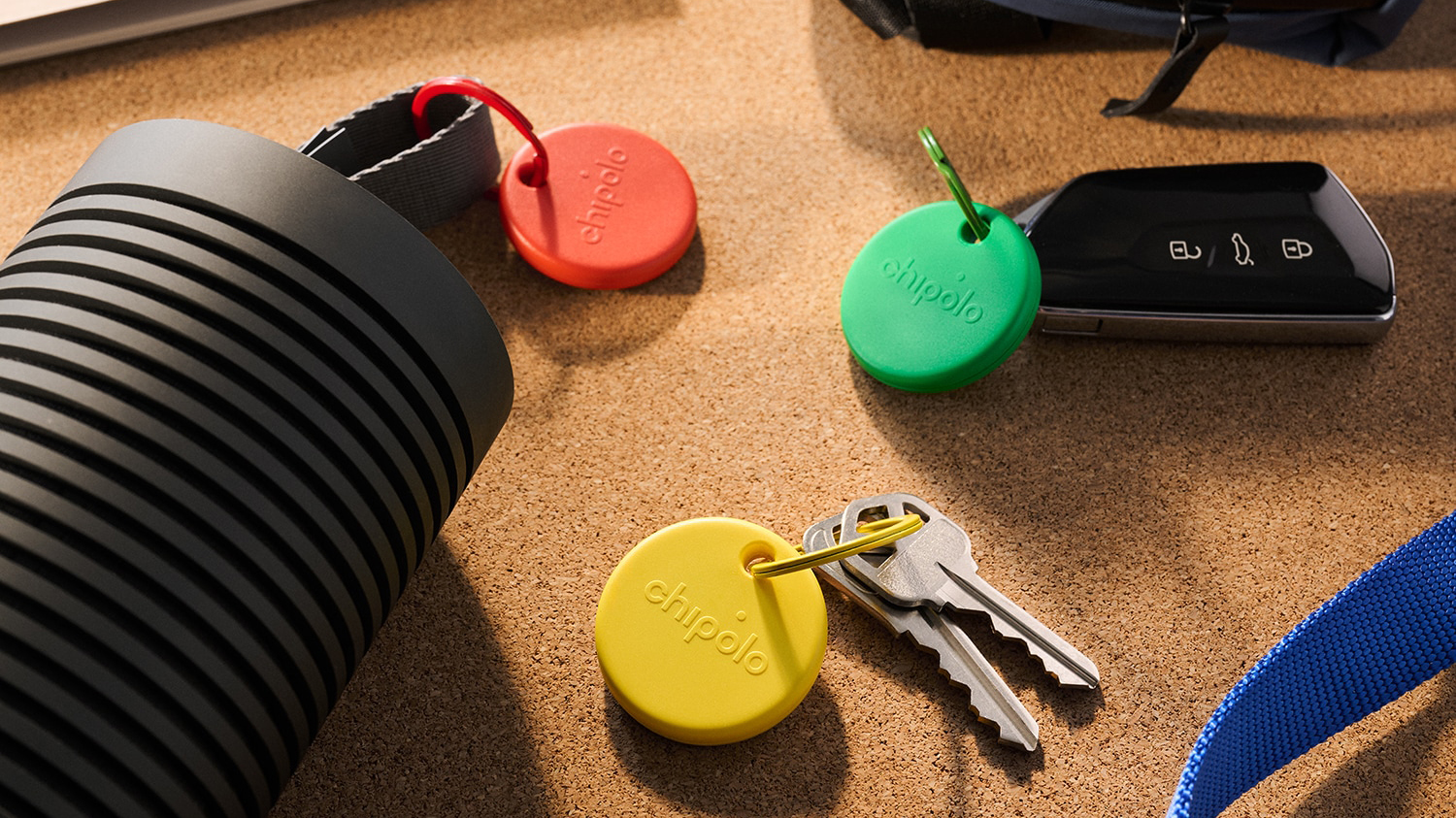 Forget AirTag, Chipolo's new Bluetooth tracker adds a dash of colour
Forget AirTag, Chipolo's new Bluetooth tracker adds a dash of colourChipolo's Pop tracker works with both Apple's Find My and Google's Find My Device – so you can track whichever platform you're using
By Mike Lowe Published